By the way, you might try home brewer rather than amateur. Just sayin...
There's nothing wrong with referring to the hobby as amateur brewing. I consider myself to be an amateur brewer and an amateur brewing scientist. The major difference between what I do and what professional brewers and professional brewing scientists do is that professional brewers and professional brewing scientists receive compensation for their work. I do it as a labor of love.
Here's some of my work:
Scottish and Newcastle's culture on a plate
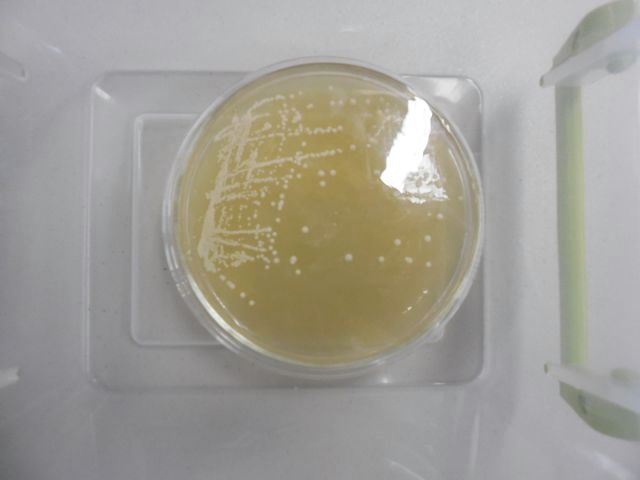
Southern Tier's culture on a plate
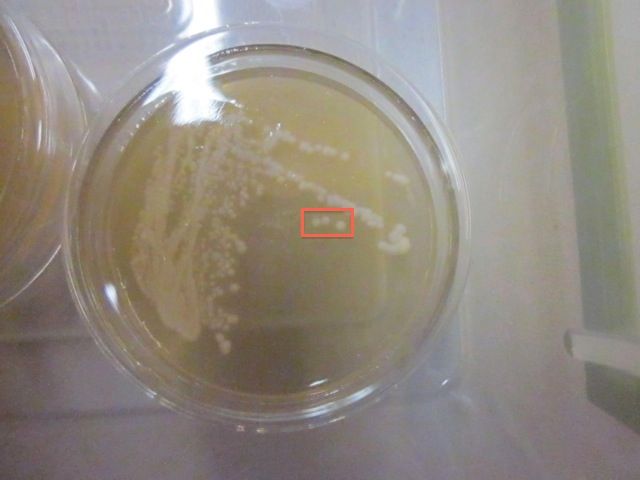
The well-isolated round colonies on the plates shown above are known as single-cell isolates. They are all the offspring of single yeast cells; therefore, they are pure yeast cultures. Emil Christian Hansen pioneered single-cell isolation at Carlsberg Laboratory.
In a single strain culture, most colonies will be from the same yeast strain with the odd wild yeast colony appearing on a plate from time to time (depending on the source, mold and bacteria can also appear on a plate). In a multi-strain culture such as real Ringwood, the colonies can be different strains. The only practical way to distinguish the strains in a multi-strain culture in a home lab is to inoculate multiple slants with a different well-separated colony per slant. The slants are then incubated and used to create starters that are used to ferment separate batches of beer. Fermentation performance is notated to identify if there are any differences between the slants.
There are two major strains in a real Ringwood culture. One strain is highly flocculent. The other strain is powdery. The powdery strain does most of the attenuation. The flocculent strain clears the beer. The flocculent strain by itself is diacetyl city. The powdery strain by itself takes forever to clear. Most of the people who plated Ringwood in the early days only managed to obtain one of the strains because it was not widely known that Ringwood was a multi-strain culture. I stumbled onto it by accident. I inoculated several slants using different colonies. After brewing several batches with different slants and obtaining different results, it dawned on me that there was more than one strain in the culture. I made two 500ml starters. One was made from one of my flocculent Ringwood slants. The other was made from one of my powdery Ringwood slants. I pitched both starters into the same batch of wort. The result was spot-on Ringwood.
My current bank
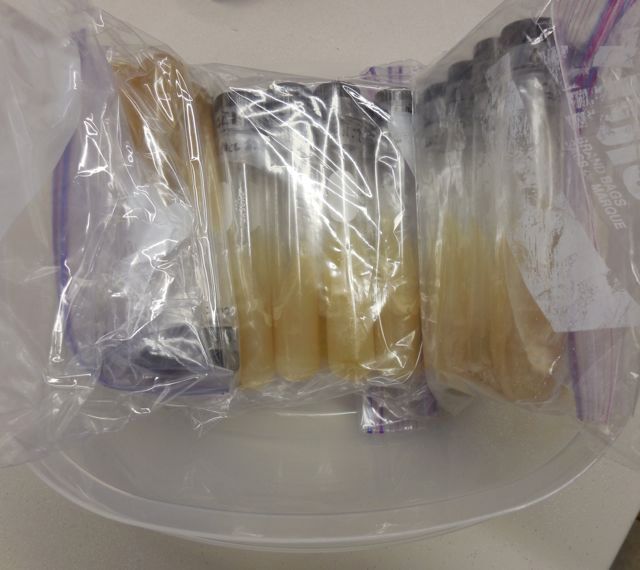
Research-oriented culture collection sourced cultures
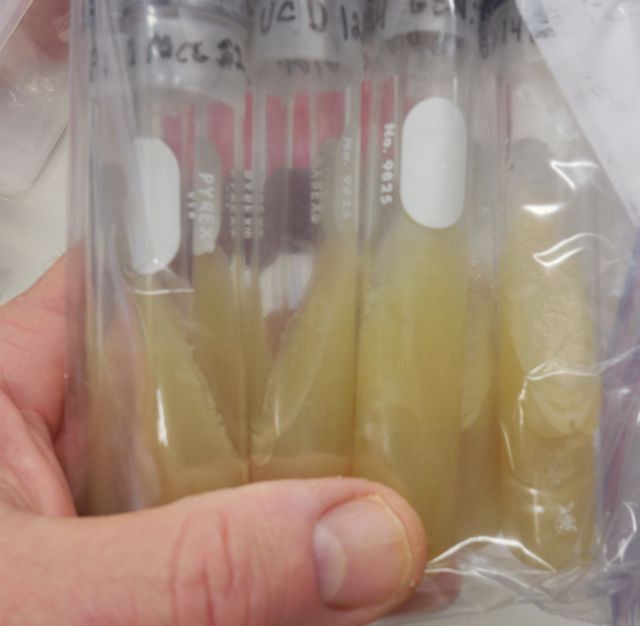
Brewery-sourced cultures that I plated for "singles"
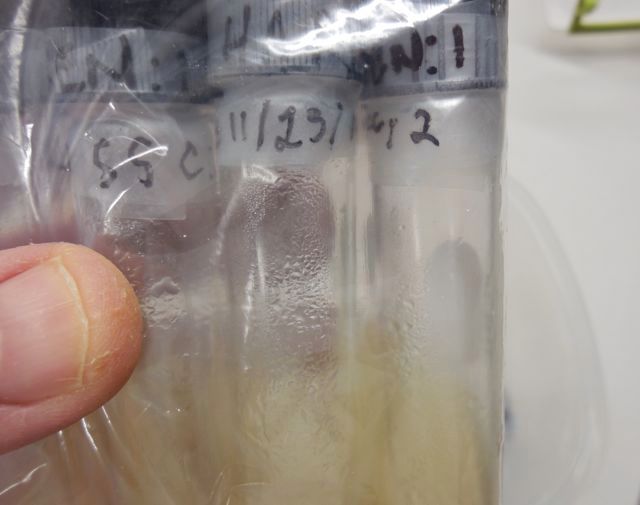
The culture tube with "HAR" written on the Parafilm in the photo shown above is Harpoon's culture.
Blank plates cooling
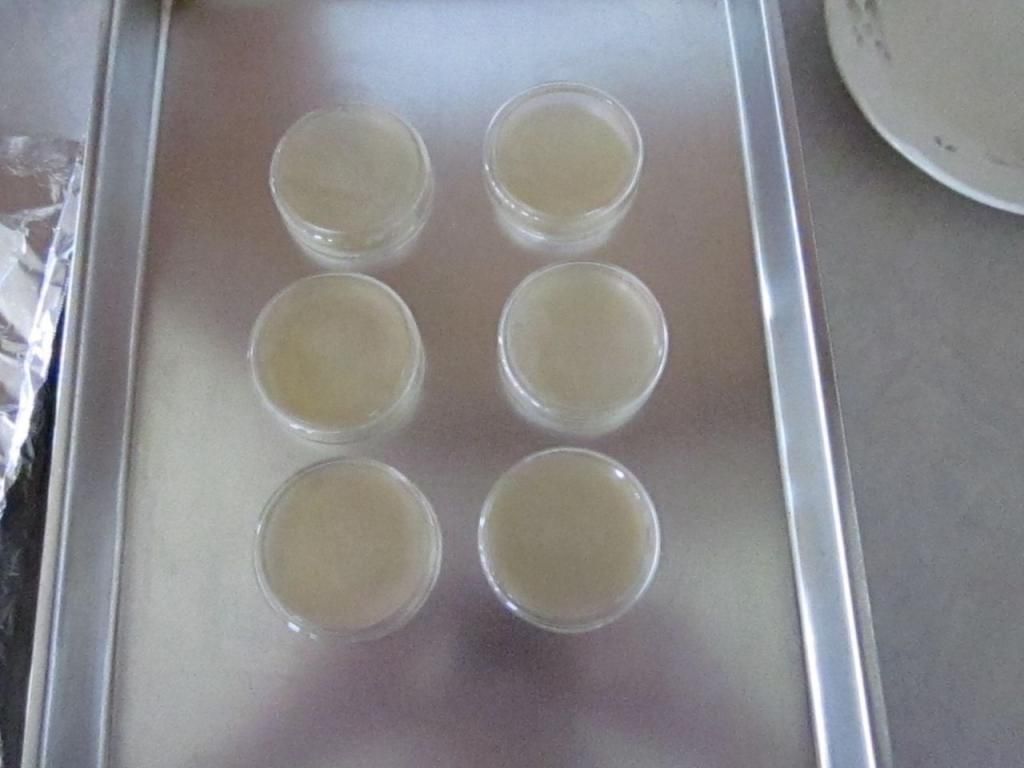
Blank slants cooling
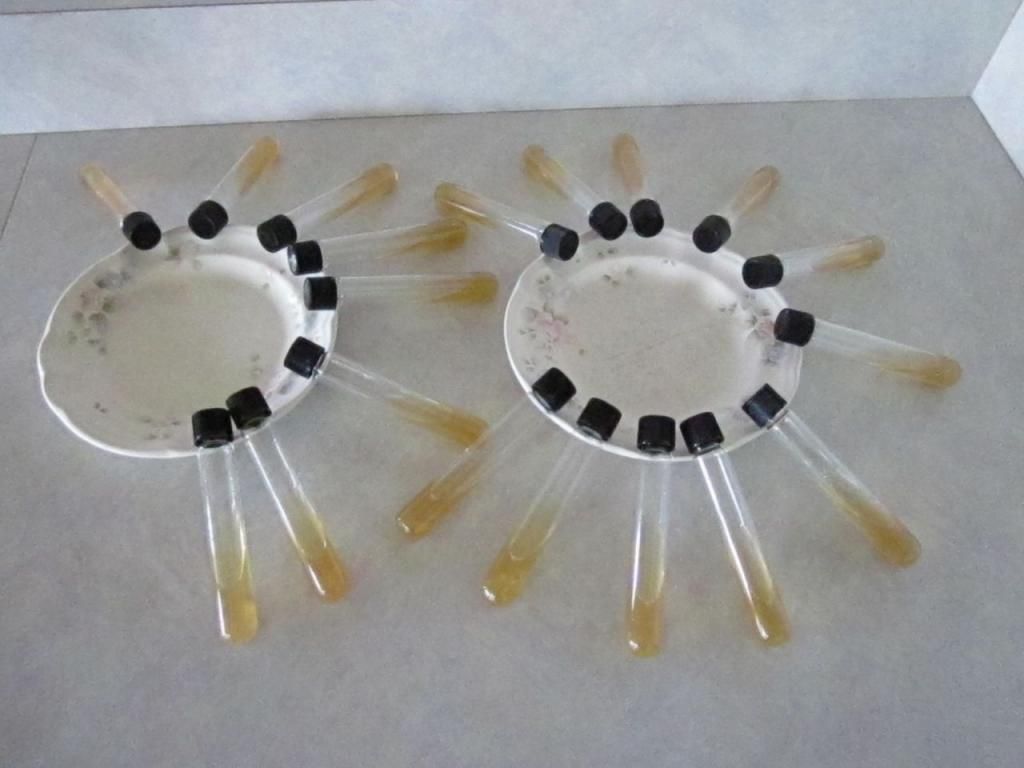
100ml media bottles with 40mls of autoclaved wort (used during propagation from slant)
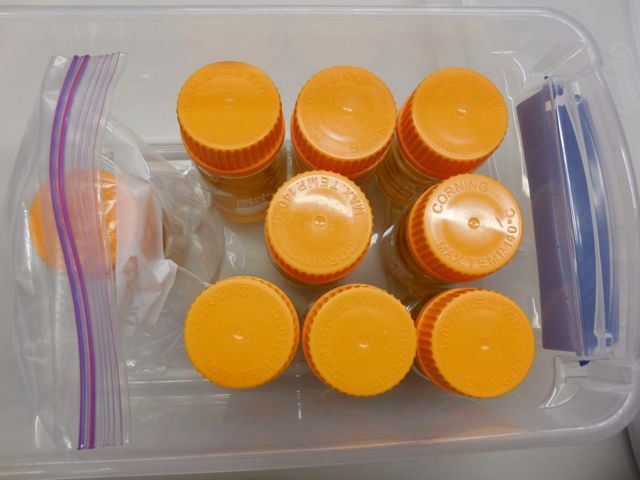
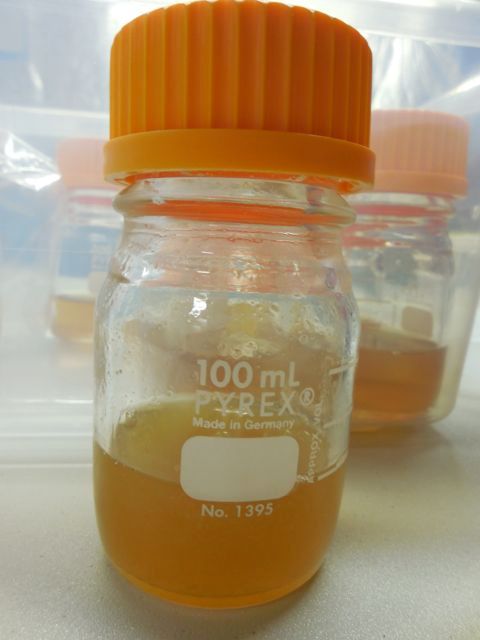
Autoclave tape after processing

Autoclave tape is used to indicate that media has been subjected to moist heat levels that are high enough to result in sterilization, which is beyond normal atmospheric boiling temperature. It looks like ordinary masking tape before being exposed to sterilization temperatures (at least 110C). The piece of tape shown above was wrapped around a 100ml media bottle.